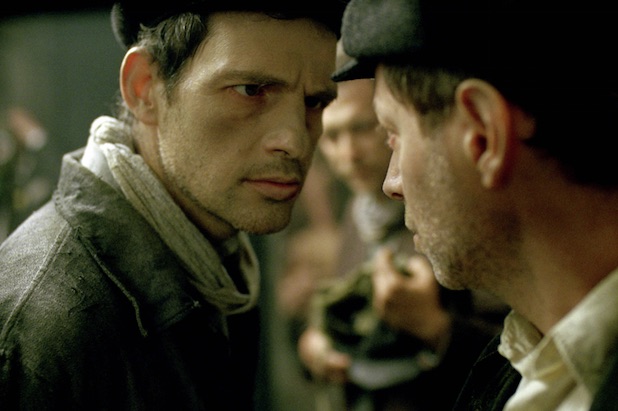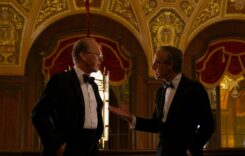JANUARY 4, 2016
PALM SPRINGS, CA
For the next 10 days, I will be reporting from the 27th annual Palm Springs International Film Festival, which has become a must-stop for those campaigning for an Oscar nomination. On Saturday night, the festival’s gala attracted all manner of potential Oscar nominees, from Cate Blanchett to Bryan Cranston, who had the opportunity to woo desert-dwelling Academy voters (of which there are quite a few) in an effort to get their vote.
I appreciate great actors as much as the next person, but I’m not here for them. I’m here for the movies. So let’s start off with a doozie.
“Son of Saul” is 113 minutes of hell.
I’m not exaggerating when I say that. You may have heard that this is a Holocaust movie. Traditionally at Oscar time, if you’re filling out your Academy Award predictions ballot at a party and there’s a Holocaust movie in the running, you picked it. It’s an easy win.
There are all kinds of Holocaust movies. There are the entertaining ones, with Roberto Begnini prancing about on his way to an Oscar in “Life is Beautiful.” There’s Steven Spielberg’s powerful (if a bit sentimental) take in “Schindler’s List.” Then there is “Son of Saul,” which is a whole other animal entirely.
“Son of Saul” focuses on Saul, a Sonderkommando, who is a Jewish prisoner hand-picked by the Nazis to do their dirty work in a concentration camp. They round up their fellow Jewish arrivals, lead them to the showers (from which they will never return), remove their bodies, scrub down the shower tiles, prepare the crematorium and finally shovel the prisoners’ ashes into the water. For this, they are granted an extra week or a month or (maybe) a year of survival.
Make no mistake. This is rough stuff, and director László Nemes has no interest in making things easier for us. When Hollywood remakes “Son of Saul,” they’ll have some newbie come into the camp and be taken under the wing of some crusty old prisoner who’ll tell him how the camp works, who to trust and who to stay away from so that we are spoon-fed everything we need to know. Nemes couldn’t care less.
From the first shot, we are thrown into the extermination phase of a concentration camp, and there’s no getting out. The film’s first image of prisoners digging graves is blurry, and things don’t come into focus until the arrival of Saul, with whom the camera will stay for the rest of the film. This technique serves 2 purposes. The first is, while all these atrocities are going on, we have the chance to follow a human face that represents getting through the horror. The second is, by keeping the camera’s sharp focus on Saul with everything in the background blurry, the images of the atrocities going on in the background are out-of-focus, sparing us the graphic details, which, had they been explicitly seen, would be too overwhelming in their impact.
As Saul goes through the bodies that he needs to transport, he sees what he believes to be his young son. (Whether or not it really is his son is open to interpretation.) As the other prisoners are planning an armed insurrection to topple their captors, Saul is entirely focused on finding a rabbi who will be willing to give his son a proper burial.
As Saul, Nemes has cast Géza Röhrig, a Hungarian poet who has limited acting experience but who is absolutely mesmerizing here. Röhrig, who deserves an Oscar nomination for this performance, is our conduit through this harrowing world. In his search for a rabbi, he is pulled into many facets of the camp, which gives us a glimpse of the horrors those prisoners went through.
Any more, I will not tell you. But please don’t let the subject matter turn you off. Yes, “Star Wars: The Force Awakens” might be a more attractive choice at the multiplex. But when “Son of Saul” comes to your city, please, please give it a try. It’s tough to sit through, I’ll grant you, but when you get out, you’ll be happy that you did. It’s one of the very best movies of the year.
GRADE: A












